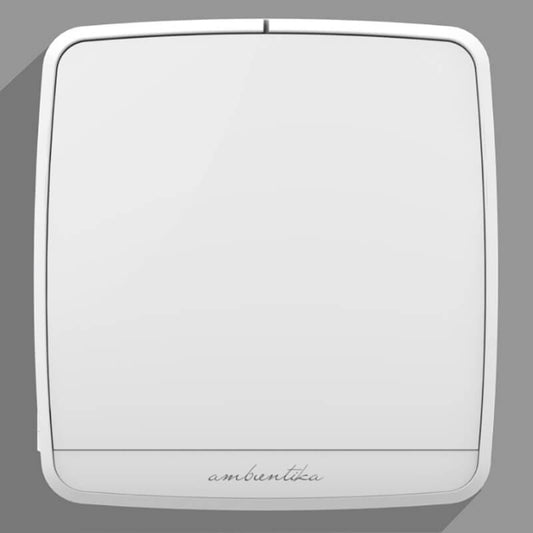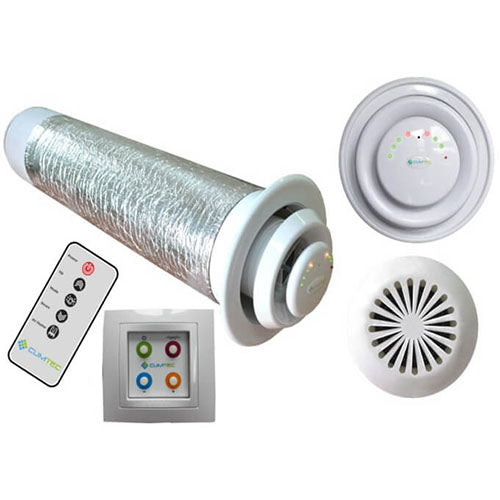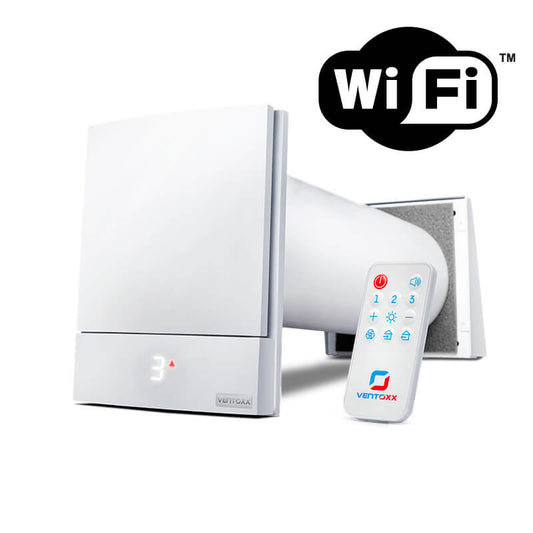The question in the title is deliberately incorrect and somewhat provocative, but it serves our purpose well this time. Namely, to show the differences between these systems and their tasks, and to find out the best solutions to ensure a comfortable indoor climate.

Each device has its own functions
There are several devices that take care of indoor air quality. In this area, air conditioners, heat recovery units and heat pumps are commonly referred to. The concept of air quality, on the other hand, is made up of many factors, the most important of which are air temperature, relative humidity and the carbon dioxide or CO2 content of the air.
Elevated humidity and CO2 content are particularly characteristic of poorly ventilated areas, where there is a lack of air exchange and fresh air inflow. Lack of fresh air over long periods of time can cause health problems for the residents and create a favourable ground for mold infestation and growth, so sufficient ventilation must be ensured. It is also necessary to ensure that the indoor temperature is at an optimum level in order to feel comfortable. This is already taken care of by space heating and cooling appliances.
IMPORTANT! People often confuse the functions of different appliances, mistakenly believing that, for example, an air conditioner not only cools the air, but also provides ventilation. THIS IS NOT THE CASE!
Air conditioners ONLY do the work of cooling the indoor air and do not do the work of exchanging the air, which is taken care of by ventilation equipment. The same applies to heat pumps - like air conditioners, heat pumps only regulate the indoor air temperature. Only, unlike air conditioners, heat pumps are able to both cool rooms in summer and heat them in winter.
"People often confuse the functions of different appliances, mistakenly believing, for example, that an air conditioner not only cools the air but also provides ventilation. This is not the case!"
The best solution - combining both functions
Ventilation can be carried out in different ways - using centralised, built-in ventilation systems, ventilating rooms with regularly open windows, or using decentralised ventilation units with heat recovery. Which solution to choose in each case depends on the preferences and capabilities of the building owner, as well as the functions and other parameters of the building itself.
It should be noted that during normal ventilation, a very large amount of heat is released through open windows, which significantly increases the amount of thermal energy used for space heating and thus also significantly increases costs. With heat recovery ventilators, most of the lost heat is recovered by heating the outgoing warm air with the incoming cool air. These energy-efficient devices therefore ensure both a complete exchange of indoor air and minimise heat loss (up to 90%) during the ventilation process. This is the main advantage of heat recovery ventilators.
If the room has a central ventilation system that provides sufficient air ventilation, installing and connecting an air conditioner to this system is a good solution. This will prevent the indoor air from overheating in summer. But in cases where there is no centralised ventilation system (or it does not serve all the rooms in the building), a combination of a heat recovery unit and an air conditioner can be used, i.e. it is possible to buy equipment that will help to keep the air in a particular room as cool as possible in summer, while at the same time providing the necessary fresh air supply. In this case, the same principle applies as in winter, but in the opposite direction. The hot air coming in will be cooled at the expense of the cooler air going out before entering the heat recovery device, so the load on the air conditioner and the amount of electricity it consumes will be reduced.
It can therefore be concluded that a combination of ventilation and temperature control is the best (and most cost-effective) solution for an optimal indoor climate. Each performs its own task, but the combination has the maximum positive effect of providing a pleasant and healthy indoor climate.








